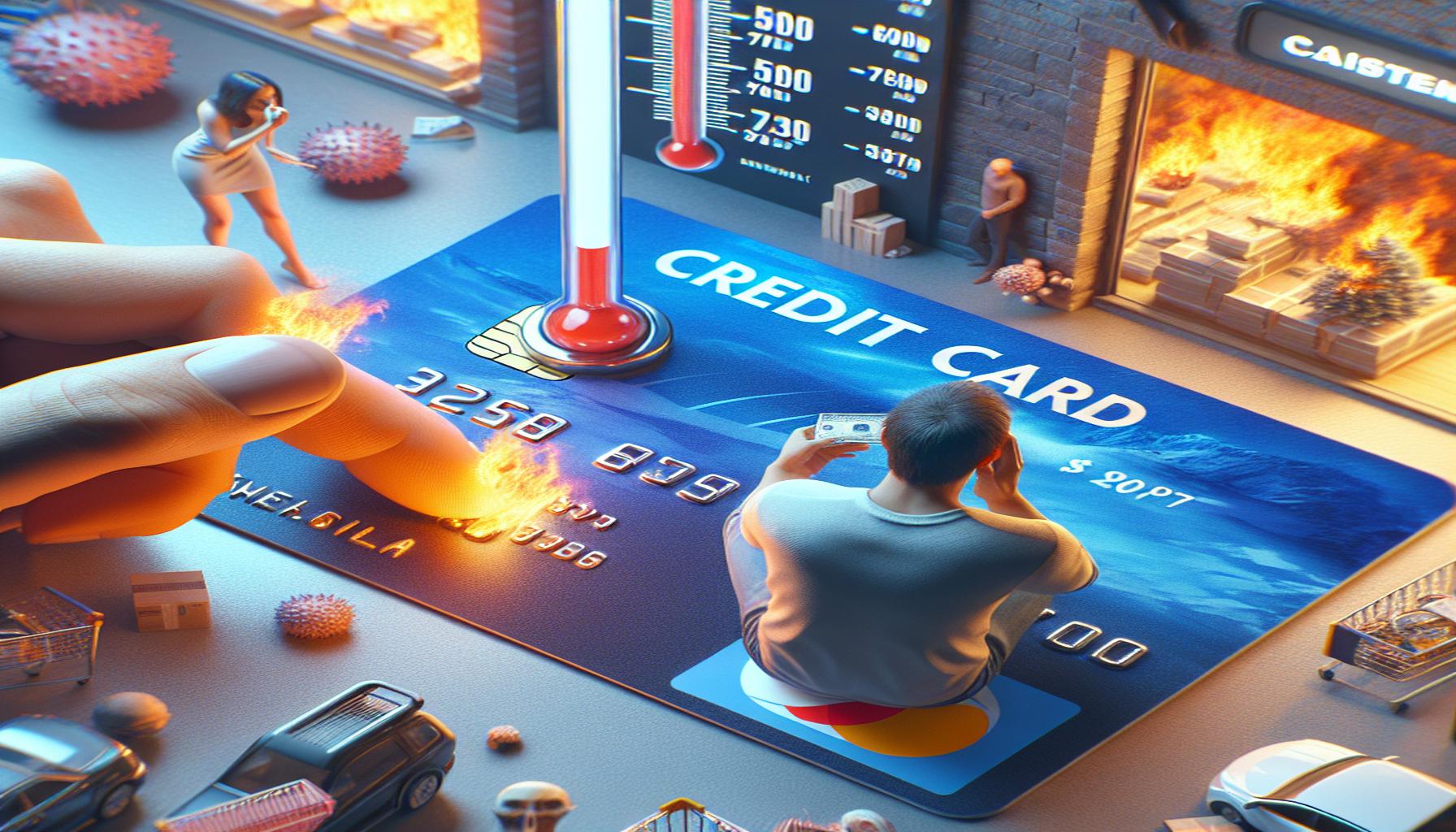How the credit card revolving limit works and when to avoid it

Understanding Credit Card Revolving Limits
A credit card’s revolving limit is a pivotal element that dictates how much you can spend across multiple purchases without having to apply for a new loan each time. Unlike a traditional loan, which gives you a single lump sum that you repay in installments, a revolving limit allows for ongoing borrowing up to a specified threshold. This limit isn’t fixed; it can change based on various factors including your creditworthiness, payment behavior, and the policies set by the credit issuer. Grasping how this mechanism operates is essential to navigating your financial landscape effectively.
One of the most beneficial aspects of a revolving limit is the flexible borrowing it provides. For example, if your credit card has a limit of $5,000, you can make purchases totaling that amount, pay off part of your balance, and then borrow again. This flexibility can be particularly useful for managing everyday expenses or unexpected bills. However, with this convenience comes responsibility, as maintaining your credit utilization ratio—ideally below 30%—is crucial for maintaining a healthy credit score.
Another important feature is the minimum payments requirement. Credit card issuers typically require you to pay at least a small percentage of your outstanding balance each month. For instance, if you owe $1,000, and the minimum payment is 2%, you’ll need to pay $20 to keep your account in good standing. Ensuring you meet this obligation helps you avoid late fees and potential damage to your credit score.
However, if you choose to carry a balance from month to month, be aware of interest charges. Credit cards often come with high-interest rates, sometimes over 20%. If you owe $1,000 and don’t pay it off, accruing interest could raise your total debt considerably over time, leading to a cycle that may be difficult to break.
While the advantages of a revolving limit can be enticing, there are situations where it may not serve your best interests. For instance, if your card has high interest rates, debt can pile up quickly if you’re not diligent about payments. Moreover, building debt by consistently exceeding your limit or only making minimum payments might lead you into a financial quagmire—one where paying off your debt feels overwhelming.
It’s also important to consider your overall financial stability. In times of economic uncertainty, relying heavily on credit cards for necessary purchases can amplify financial risk. If you’re facing job loss or unexpected expenses, it may be wiser to minimize credit card usage until your situation stabilizes.
By understanding precisely when to leverage—or refrain from utilizing—your revolving limit, you can make informed financial decisions that align with your goals. Maximize benefits while minimizing risks, and aim for a balanced approach to managing your credit.
The Mechanics of Credit Card Revolving Limits
The revolving limit is not just a number; it represents the ceiling of your borrowing ability with a credit card. When you use a credit card, the credit issuer allows you to borrow against this limit repeatedly, as long as you make the required payments and stay within the agreed boundary. For instance, let’s say you have a credit card with a limit of $3,000. You can charge up to this amount, pay off part of it, and then borrow again as needed.
To fully grasp how a revolving limit functions, one must understand its key components:
- Borrowing Capacity: This is the maximum amount you can spend on your credit card without exceeding your limit. Knowing this helps you plan purchases and avoid overspending.
- Billing Cycle: Typically, your credit card issuer will have a monthly billing cycle. At the end of each cycle, you’ll receive a statement detailing your spending, minimum payment due, and due date.
- Available Credit: This refers to the amount of your credit limit that you have not yet used. If you have a limit of $5,000 and a balance of $1,000, your available credit is $4,000.
Understanding these components allows you to use your credit card more effectively. For example, if you’re considering a larger purchase, knowing your available credit is critical to ensure you’re not reaching or exceeding your limit. Exceeding the limit can lead to over-limit fees or a decrease in your credit score, creating a snowball effect of additional charges and financial instability.
Another pivotal aspect is how payments affect your revolving limit. Each time you make a payment on your credit card, the amount you paid reduces your outstanding balance and subsequently increases your available credit. For example, if you spend $2,000 on your card and then make a payment of $500 by the due date, your new balance will be $1,500, thus providing you with $3,500 of available credit.
While revolving limits offer remarkable flexibility, it is essential to have a strategic approach to utilizing this financial tool. One common strategy is to monitor your credit utilization ratio, which is the ratio of your current balance to your credit limit. Ideally, you should aim for less than 30% utilization to maintain a healthy credit score. For instance, if your limit is $10,000, keeping your balance below $3,000 will likely be beneficial for your credit score.
In summary, understanding how credit card revolving limits work is crucial for financial well-being. It empowers you to manage your expenses, plan for future purchases, and maintain a positive credit profile. By being conscious of your spending habits and the mechanisms at play, you can leverage your credit card limits effectively—without falling into unnecessary debt traps.
When to Avoid Overusing Your Revolving Limit
While credit card revolving limits can significantly ease your purchasing power, it is crucial to recognize scenarios where leaning too heavily on them can lead to financial distress. Understanding when to avoid overusing these limits can help prevent detrimental debt accumulation and safeguard your credit score.
1. High-Interest Rates: Credit cards often carry high-interest rates, which can range from 15% to 25% or more. If you regularly carry a balance instead of paying it off in full each month, the interest charges can add up quickly. For instance, if you only pay the minimum due on a $3,000 balance at a 20% APR, it can take years and cost you thousands in interest to pay off the debt. In such situations, it’s advisable to avoid charging more to your card and consider using savings or payment plans instead.
2. Building a Good Credit History: A good credit score is largely determined by your credit utilization ratio. If you find yourself consistently maxing out your credit cards or keeping your balances high, this can negatively impact your credit score. If your revolving limit is set at $10,000 and you are averaging a balance of $8,000, you’re utilizing 80% of your available credit, which can signal to lenders that you might be in financial trouble. Keeping your utilization under 30% is a safer bet to maintain a healthy credit score.
3. Budgeting Challenges: Careless spending on credit cards can lead to budgeting challenges and unmanageable financial situations. If you notice a pattern of buying things you cannot afford to pay off immediately, it would be wise to place limits on your credit card usage. Consider switching to a cash-only system until you feel stable in managing your finances. This approach can create awareness of your spending patterns and encourage a more mindful approach to purchases.
4. Emergency Situations: Credit cards can easily become a financial crutch during emergencies, but relying on them for extended periods can spiral into a bigger issue. It may be tempting to charge emergency expenses like car repairs, medical bills, or home repairs, especially when immediate cash isn’t available. However, accumulating debt on these life necessities can be risky, especially if you fail to pay it off promptly. Building an emergency savings fund can serve as a buffer, alleviating the need to lean on your credit limit in urgent times.
5. Getting Close to Your Limit: If you find yourself inching closer to your revolving limit, it’s a sign that you may need to pause and reassess your spending habits. Reaching or exceeding your credit limit can result in additional fees and negatively impact your credit score. It’s advisable to keep a close eye on your balance each month and make sure to set aside funds for greater purchases rather than relying solely on borrowed money.
Being aware of these pitfalls will enable you to utilize your credit card revolving limits wisely. Establishing healthy credit habits, such as making timely payments and steering clear of high-interest debt, can go a long way in ensuring that your financial journey remains stable and secure.
Conclusion
Understanding how credit card revolving limits work is essential for managing your finances effectively. These limits can offer flexibility in your spending, but they also come with responsibilities that should not be overlooked. Always keep in mind that utilizing your revolving limit means balancing convenience with the risk of accumulating debt that can spiral out of control.
As discussed, it’s important to pay attention to factors like high-interest rates, which can lead to long-term financial strain if balances are not paid in full. Monitoring your credit utilization ratio is also crucial, as maintaining it below 30% can help you sustain a healthy credit score. Moreover, keep mindful of your budgeting habits. If credit card spending makes you feel financially unstable, reverting to cash transactions may encourage better spending discipline.
Establishing a solid financial foundation is key to avoiding dependence on credit cards for emergencies. By building an emergency fund, you can reduce the temptation of relying on your revolving limit when unexpected expenses arise. Finally, regularly checking your account balances and being aware of your limits will help you avoid unnecessary fees and protect your credit score.
In conclusion, while credit card revolving limits can enhance your purchasing capability, they must be managed wisely to prevent adverse financial situations. Being informed and proactive about your spending will lead you to a healthier financial future.

Linda Carter is a writer and financial expert specializing in personal finance and investments. With extensive experience helping individuals achieve financial stability and make informed decisions, Linda shares her knowledge on the Territorio Deficiente platform. Her goal is to provide readers with practical advice and strategies for financial success and smart investments.






